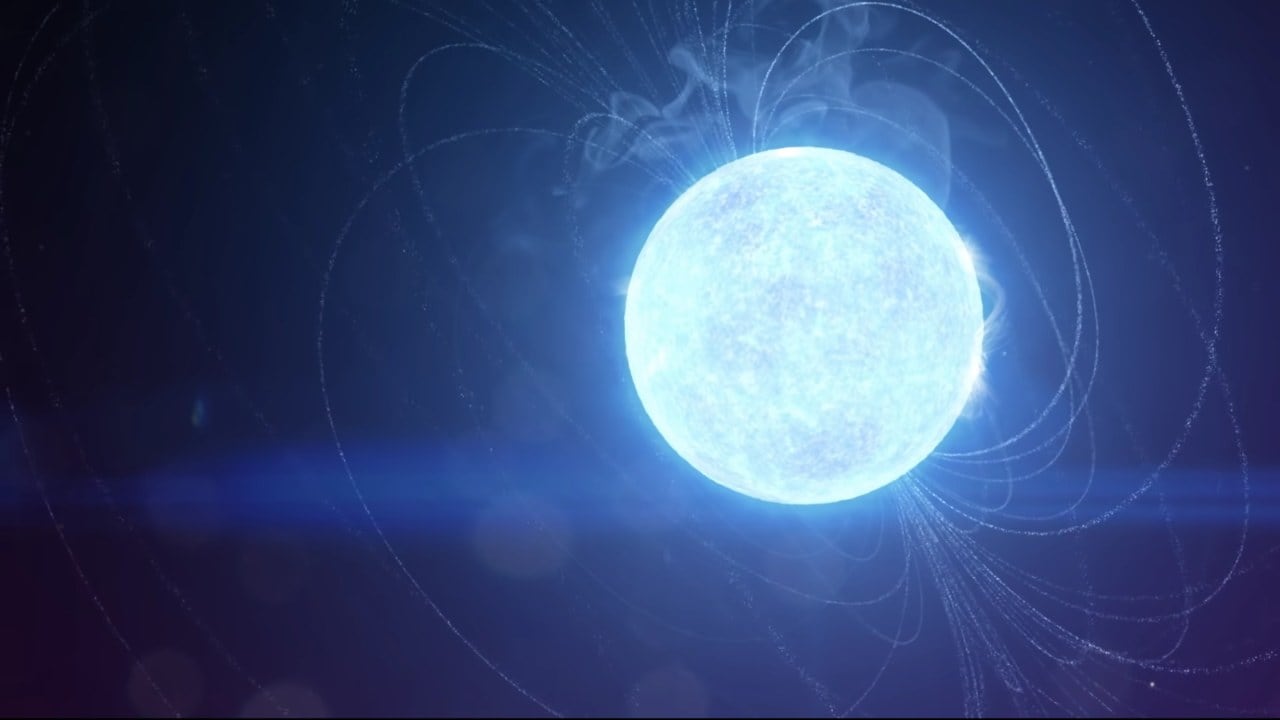Astronomers discover supply of highly effective cosmic quick radio burst- Expertise Information, DD Freedishnews

The Related PressNov 05, 2020 11:24:31 IST
A flash of luck helped astronomers clear up a cosmic thriller: What causes highly effective however fleeting radio bursts that zip and zigzag by means of the universe? Scientists have recognized about these energetic pulses — known as quick radio bursts — for about 13 years and have seen them coming from outdoors our galaxy, which makes it more durable to hint them again to what’s inflicting them. Making it even more durable is that they occur so quick, in a few milliseconds.
Then this April, a uncommon however significantly weaker burst coming from inside our personal Milky Means galaxy was noticed by two dissimilar telescopes: one a California doctoral scholar’s set of handmade antenna s, which included precise cake pans, the opposite a $20 million Canadian observatory.
They tracked that quick radio burst to a bizarre kind of star known as a magnetar that’s 32,000 light-years from Earth, based on 4 research in Wednesday’s journal Nature.
It was not solely the primary quick radio burst traced to a supply, however the first emanating from our galaxy. Astronomers say there may very well be different sources for these bursts, however they’re now positive about one responsible get together: magnetars.
Magnetars are extremely dense neutron stars, with 1.5 instances the mass of our solar squeezed into an area the scale of Manhattan. They’ve monumental magnetic fields that buzz and crackle with power, and generally flares of X-rays and radio waves burst from them, based on McGill College astrophysicist Ziggy Pleunis, a co-author of the Canadian examine.
The magnetic area round these magnetars “is so sturdy any atoms close by are torn aside and weird features of elementary physics could be seen,” mentioned astronomer Casey Legislation of the California Institute of Expertise, who wasn’t a part of the analysis.
There are possibly a dozen or so of those magnetars in our galaxy, apparently as a result of they’re so younger and a part of the star delivery course of, and the Milky Means isn’t as flush with star births as different galaxies, mentioned Cornell College Shami Chatterjee, who wasn’t a part of both discovery group.
This burst in lower than a second contained about the identical quantity of power that our solar produces in a month, and nonetheless that’s far weaker than the radio bursts detected coming from outdoors our galaxy, mentioned Caltech radio astronomer Christopher Bochenek. He helped spot the burst with handmade antennas.
These radio bursts aren’t harmful to us, not even the extra highly effective ones from outdoors our galaxy, astronomers mentioned.
Those that come from outdoors our galaxy and journey hundreds of thousands or billions of light-years are “tens of hundreds to hundreds of thousands of instances extra highly effective than something we’ve got detected in our galaxy,” mentioned co-author Daniele Michilli, an astrophysicist at McGill and a part of the Canadian group.
Scientists assume these are so frequent that they might occur greater than 1,000 instances a day outdoors our galaxy. However discovering them isn’t straightforward.
“You needed to be wanting on the proper place on the proper millisecond,” Cornell’s Chatterjee mentioned. “Except you have been very, very fortunate, you’re not going to see one among these.”
Though it is a frequent prevalence outdoors the Milky Means, astronomers don’t know how usually these bursts occur inside our galaxy.
“We nonetheless don’t understand how fortunate we obtained,” Bochenek mentioned. “This may very well be a once-in-five-year factor or there may very well be just a few occasions to occur every year.”
Bochenek’s antennas value about $15,000. Every is “the scale of a big bucket. It’s a chunk of 6-inch steel pipe with two literal cake pans round it,” the doctoral scholar mentioned. They’re crude devices designed to take a look at an enormous chunk of the sky — a few quarter of it — and see solely the brightest of radio flashes.
Bochenek figured he had possibly a 1-in-10 likelihood of recognizing a quick radio burst in just a few years. However after one yr, he hit pay filth.
The Canadian observatory in British Columbia is extra centered and refined however is geared toward a a lot smaller chunk of the sky, and it was in a position to pinpoint the supply to the magnetar within the constellation Vulpecula.
As a result of the bursts are affected by all the fabric they move by means of in house, astronomers may have the ability to use them to higher perceive and map the invisible-to-us materials between galaxies and “weigh” the universe, mentioned Jason Hessels, chief astronomer for the Netherlands Institute for Radio Astronomy, who wasn’t a part of the analysis.
Astronomers have had as many 50 totally different theories for what causes these quick radio bursts, together with aliens, they usually emphasize that magnetars is probably not the one reply, particularly since there appear to be two sorts of quick radio bursts. Some, just like the one noticed in April, occur solely as soon as, whereas others repeat themselves usually.
Michilli mentioned his group has traced one outburst that occurs each 16 days to a close-by galaxy and is getting near pinpointing the supply.
A few of these younger magnetars are just a few many years previous, “and that’s what provides them sufficient power to supply repeating quick radio bursts,” Cornell’s Chatterjee mentioned.
Monitoring even one outburst is a welcome shock and an vital discovering, he mentioned.
“Nobody actually believed that we’d get so fortunate,” Chatterjee mentioned. “To search out one in our personal galaxy, it simply places the cherry on high.”
#Astronomers #discover #supply #highly effective #cosmic #quick #radio #burst #Expertise #Information #DD Freedishnews
































